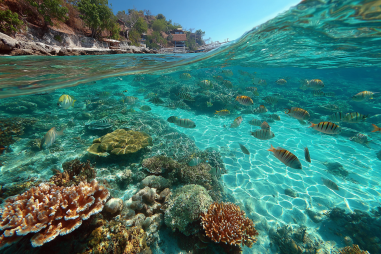Mount Mayon is one of the most active and iconic volcanoes in the Philippines, known for its nearly perfect cone shape and frequent eruptions. Visiting Mayon offers breathtaking views and unforgettable experiences, but it also requires a strong awareness of volcanic activity and safety measures. If you’re planning to explore the beauty surrounding this majestic volcano, understanding the risks and how to stay safe during an eruption is essential. This guide covers everything travelers need to know about Mount Mayon eruption safety, from the monitoring systems in place to emergency procedures and practical tips for a secure visit.
Overview of Mount Mayon’s Volcanic Activity
Mount Mayon, located in the Bicol region of Luzon, is one of the most active volcanoes in the Philippines. It rises to about 2,463 meters above sea level and frequently exhibits various levels of volcanic activity, from minor steam emissions to significant eruptions that can impact nearby communities. Its volcanic history dates back thousands of years, with eruptions recorded since the 1600s.
While Mayon’s eruptions often produce stunning lava fountains and ash plumes, they can also pose serious hazards such as pyroclastic flows, lava flows, ashfall, and lahar or mudflows. These dangers necessitate a well-structured system to monitor volcanic activity and protect both residents and visitors.
Monitoring and Alert Systems in Place
The Philippine Institute of Volcanology and Seismology (PHIVOLCS) is responsible for monitoring Mount Mayon’s activity. PHIVOLCS utilizes a variety of tools including seismographs, tiltmeters, gas analyzers, and satellite imagery to detect signs of volcanic unrest.
The monitoring efforts allow authorities to track magma movement and detect early signs of eruptions. This data is crucial for issuing timely warnings and evacuation notices to ensure public safety. Travelers should be aware that PHIVOLCS regularly releases updates on Mount Mayon’s status, especially when activity intensifies.
How to Interpret Warning Levels
PHIVOLCS uses a five-level alert system to communicate the current state of Mayon’s volcanic activity. Understanding these levels can help travelers gauge the risk and make informed decisions about their visit.
- Alert Level 0: No abnormal activity. Safe conditions for visiting.
- Alert Level 1: Abnormal activity detected—signs of unrest with minor eruptions possible.
- Alert Level 2: Increasing unrest—possible hazardous eruptions, restricted access around the volcano’s summit.
- Alert Level 3: Magma is moving upward; eruption possible within weeks or days. Evacuation preparation recommended.
- Alert Level 4: Hazardous eruption imminent. Mandatory evacuation in effect.
- Alert Level 5: Eruption ongoing with danger to life and property. Strictly no entry to danger zones.
Travelers should regularly check PHIVOLCS updates and take these warning levels seriously, especially when levels are raised to 2 or above.
Emergency Evacuation Procedures
In the event that an eruption threat escalates, local governments implement evacuation procedures to relocate residents and visitors to safe zones. Knowing how these procedures work can greatly improve your safety during an emergency.
Evacuation centers are typically set up in schools, community halls, or government buildings away from danger zones. Authorities use community announcements, sirens, and social media to alert people.
If you are near Mount Mayon and authorities order an evacuation, it is important to:
- Follow instructions from local officials without delay.
- Prepare essential items such as identification documents, water, masks, and medications.
- Use designated evacuation routes to avoid hazardous areas.
- Stay calm and assist others if possible.
Tips for Visitors During Heightened Alerts
If the alert level around Mount Mayon rises, visitors should adjust their plans accordingly. Here are some essential tips to remain safe:
- Stay Updated: Regularly check official sources like PHIVOLCS and local government announcements.
- Avoid Restricted Zones: Never enter areas marked as danger zones or closed by authorities.
- Keep Emergency Supplies: Carry face masks to protect against ash inhalation, bottled water, and a first-aid kit.
- Plan Alternatives: Have contingency plans for accommodation and travel if you need to leave the area quickly.
- Respect the Environment: Volcanic ash can be harmful—avoid touching or inhaling it and keep electronic equipment protected.
Local Government Safety Protocols
The local government units (LGUs) around Mount Mayon have established safety protocols aimed at ensuring public protection during volcanic activity. These include coordination with PHIVOLCS, regular community drills, and risk communication campaigns. As a visitor, you might notice checkpoints, posted warning signs, and increased presence of emergency responders during heightened alerts.
LGUs also manage evacuation centers and coordinate relief operations. They work closely with tourism agencies to balance visitor safety and economic activity, sometimes suspending tours and access to certain areas depending on volcanic risk.
What to Do in Case of an Eruption
In the unlikely event that you experience an eruption while near Mount Mayon, staying calm and acting quickly is critical. Here’s what you should do:
- Follow Official Instructions: Listen to authorities and follow evacuation orders immediately.
- Protect Yourself from Ash: Use masks or cloth to cover your mouth and nose, and wear goggles if possible.
- Seek Shelter: Stay indoors or in a safe evacuation center away from the ashfall and lava flow paths.
- Avoid Rivers and Low-Lying Areas: Lahars are fast-moving mudflows triggered by volcanic ash mixing with rainwater. Stay away from river channels during and after eruptions.
- Prepare for Power or Communication Outages: Have flashlights, batteries, and emergency contacts ready.
Remember that eruptions can be unpredictable, so maintaining situational awareness and readiness is key.
Staying Informed and Prepared
Visiting Mount Mayon safely is about respecting the power of nature and staying informed. Before your trip, check for the latest advisories and weather conditions. Register with your accommodation or local tourism office so authorities can contact you if necessary. Always plan for flexibility—sometimes it’s best to delay or change travel plans when volcanic activity is elevated.
By understanding the volcanic hazards, knowing how to interpret alert levels, and following local protocols, you can enjoy your visit to Mount Mayon responsibly and safely. This natural wonder rewards prepared travelers with incredible views and experiences that resonate long after the journey ends.







